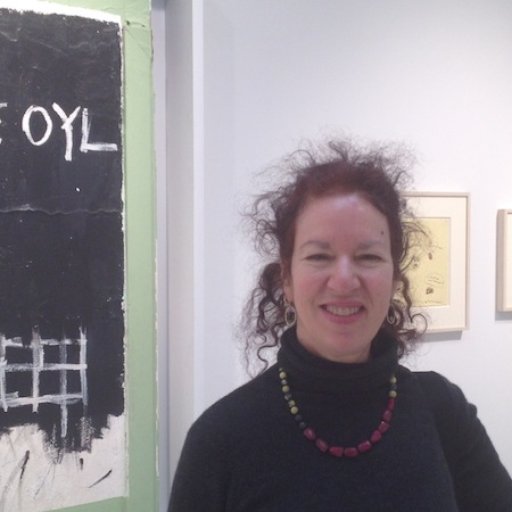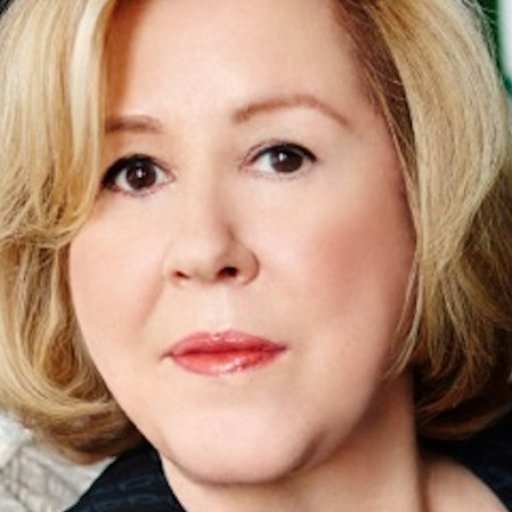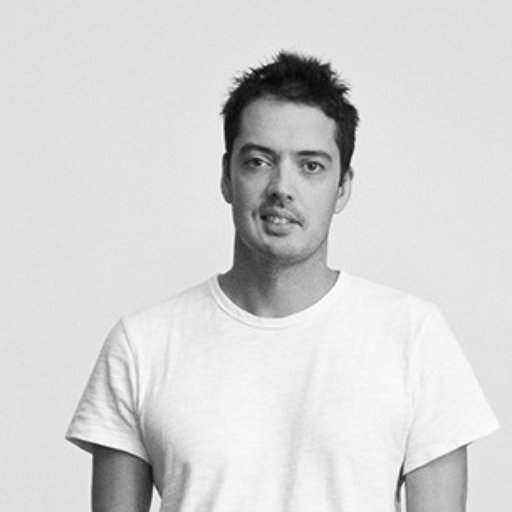A collector, patron, and art lawyer, Josh Roth intersects with the vibrant art scene of Los Angeles at many points. While still in college, Roth had begun buying art, a habit he picked up from his father, Steven Roth, founding partner at Creative Arts Agency. By the time he graduated law school—Roth currently leads on all art-related accounts at Glaser Weil—he was committed to building a collection with his wife, Sonya, a deputy attorney general for the State of California.
Together they have amassed holdings that largely focus on Los Angeles artists, featuring works by Paul McCarthy, Raymond Pettibon, Sterling Ruby, Alex Israel, Sam Durant, Cyprien Gaillard, Joe Bradley, Jonas Wood, Mark Hagen, David Ostrowski, Larry Johnson, among others. Roth also sits on the board of the independent art space LAXART and is a member of the Contemporary Friends group at Los Angeles County Museum of Art.
Roth sat down with Eric Bryant among the booths at this month’s Armory Show art fair, where friends and clients such as Ian Fleming, director of the Art Los Angeles Contemporary fair, stopped to say hello. Amid the hustle and bustle, Roth discussed his passion for art, what got him started, and how the L.A. scene is changing.
What first drew you to collecting?
I grew up in a family that had this as a real primary interest. My father is a collector and philanthropist—he's on the board of LACMA and was on the board of MOCA for some time until recently, and he supports a lot of shows in L.A. When I was growing up, he would take me to a lot of exhibitions and galleries. We would have these conversations around the dinner table that I thought were normal, where we would talk about this Baldesari versus that one.
The first thing I bought was an amazing, poetic, and graphic black-and-white baseball drawing by Raymond Pettibon. It was maybe $1,500, and I saved up for a long time to get it. I was maybe 20 years old, and I was obsessed with his work. I felt he is someone who is historically important, and that his art is part of where I come from. When I got it framed and brought it home, it was the most thrilling experience.
From early on you and your wife have been partners in the collection.
Absolutely, my wife and I collect together. It is something we do in concert with each other, consulting one another. We met at Loyola Law School and we first bonded over our similarities and our common background and life preferences. Love at first sight, as they say. One of our many commonalities is our love of the arts. In the first month or so when we were dating, we went to see a Pettibon show at Regen Projects. We both loved how his work told such a personal story about his life and upbringing and how the themes he was dealing with resonated so well with where we come from—the city of L.A. I grew up listening to the punk music and watching the films he references as well as surfing and playing baseball.
We both spent time going to the Black Pussy soirées that Jason Rhodes put on with a friend of ours. We just felt drawn to this art that is happening here right now—from Mike Kelley onwards. The energy, the angst, the ideas, that interests the two of us.
Early on we were just a couple of kids in law school, so we had very limited funds. However everything was cheaper in the early 2000s. We started slowly. Buying a piece here and there but mostly just saw shows. We put special emphasis on things like meeting the people at the galleries. Tried to meet the artists and visit with them. We just wanted to know what they were doing creatively and learn about what was being made, why it was being made, and what it meant in a historical context at the time. Buying works really came later.
Now that my wife and I are working, we are still really focused. We don’t just buy names that we hear people talking about—we have people we look at for a long period of time and we learn about. And that is how the collection has grown up. The acquisition of an artwork for us has always more been about the stories they tell about our life and the times we live in. We both recognize from going to museums that art should be contextualized with regard to where it fits in to the rest of the world and our history.
So that is how you decided to focus on Los Angeles artists?
The collection is not only L.A., but it’s like 80 percent L.A. I identify very much with the history and the feel and the sense of place. I grew up there and I am proud of it. I love other places, but I always enjoy coming back home. There's so much history that intrigues me—from the oil boom days of There Will Be Blood to the era of Mickey Cohen to the golden age of Hollywood. I tell everyone to read a great book, Mike Davis’s City of Quartz. So we don’t have any rules that we only collect artists from L.A. But we are studying this group of artists from the late ’70s to now—from Mike Kelley to Alex Israel, if you are thinking of bookends. Other core artists are Jim Shaw, Pettibon, Paul McCarthy, Jason Rhodes.
We are fascinated by people like Allen Ruppersberg and John Baldesari and Ed Ruscha—though I'm not that successful yet. But that is my dad’s generation. Sam Durant is my contemporary, Alex Israel is a friend of mine. They are a part of what is happening now in our city. I know these people, I represent some of them. That feels like it matters to us. The works are inspiring to live with, but there is also a sense of history with each piece. There are stories we are looking to tell our children when they are older. I have a four year old, so she is not quite old enough for me to talk about the Black Pussy soirées.
Are there artists you have been looking at lately?
There are so many. My wife and I have been spending a lot of time with Jonas Wood and Shio Kusaka. I think the two of us relate to them in what is obviously a great commitment to each other and their children. And they two of the best artists working today. Jonas is a painter that I think everybody needs to get familiar with. In an era where everyone is focusing on high-tech process and materials and abstraction, he's doing something almost classical in its approach and technique. Painting is not dead.
Shio is also doing something in making ceramics that is decidedly analogue in an otherwise completely digital world. By the way, if you spend time viewing each of their work, you will notice that the artworks are very personal and autobiograpchcal. Shio’s dinosaur pots are a reference to their oldest child’s fascinations with these animals. Jonas paints Shio’s pots, as well as subject related to where he comes from, his friends and what he sees. In the end you get the sense of something old fashioned and expressive which is truly unique in today’s world.
Another artist I think needs to be understood by people to a much greater extent is Alex Israel. He’s not an easy read on first glance, as his practice encompasses so many different mediums. People are obviously responding to the formal qualities of his work in that everyone is clamoring for these beautiful objects. But I urge everyone to really dig in on this work. There are so many relevant and interesting critiques of the city of Los Angeles, the film industry, celebrity, consumerism—particularly in this sometimes vapid, arid desert we call L.A.—and our native architectural style. His work is probably the most effective commentary on this city to be done in a generation.
You recently moved into and restored a home. Did that affect your collecting or did the collecting affect what you did with the home?
When looking for a place, the first consideration we had after whether our children would like to live in the home and grow up in this neighborhood was what the wall situation was like. Each time we went to an open house the brokers would be saying look at the amazing backyard, the amazing pool, and we were like, "Sorry the walls are no good here and the lighting isn’t right." You can imagine we were met with several blank stares.
We are fortunate our home has good volumes of space but we certainly do not look to acquire art to suit the house. Our philosophy has always go after the absolute best piece by an artist that you can get. Don’t settle for just a thing by an artist you like. If you can't get access to the best or you can't afford it, look at something else. So the size of the artworks is never not a driving force behind our decisions. The decision making process is very organic. First, the historical context has to be there—the connection to the rest of the artworks—and then it has to resonate personally. If all those elements are present we are content to bring something home.
With your family history and your law practice, art plays a part in your life beyond just building the collection. Do these areas feed each other?
My work is in the arts and my passion is the arts and I have been very lucky to have the two meet. My work as a lawyer for artists, my involvement with LACMA, and my friendship with people in the city gives me great opportunities to meet and visit with so many wonderful artists. I constantly visiting artists' studios. Through our family collection we have been able to make donations to LACMA of major works by Mark Grotjahn, Christopher Wool, Andreas Gursky, and others. In each case, the gifts to LACMA have come as a result of talking with the artists and learning about who they are as people and what motivates them to create their artworks.
I am also part of a group LACMA just under the board called the Contemporary Friends that is chaired by Franklin Sirmans, the museum’s dynamic contemporary arts curator. We raise money through donations from each patron and everybody does studio visits and at the end of the year we put the money together and acquire some of the works we have seen. It’s a really fun way to participate, and there are some great people on it. I've been doing that for a couple years.
And is participation in those kind of programs at L.A. institutions on the rise?
Absolutely. Not just in L.A., but everywhere I see younger people who want be on these committees. We get together and do these events or studio visits, and my wife and I are so happy because its not just people doing it out of some obligation. There are cooler younger people. You meet people who are not necessarily trying to buy the latest up-and-coming art, they just want to go to museums, they want to learn about stuff, they want to educate themselves and have an enriched life. Now you have people who really want to be involved.
Do you feel that is related to the L.A. scene having matured over the last ten years?
L.A. has always been a very vibrant artist community. Look back on Ferus Gallery in the late ’50s and the Light and Space movement in the ’60s and ’70s. But so many folks from New York are realizing that we never paid it the respect it was due. A lot of artists are moving out here because it's a great lifestyle—you can have more space for less money, you can live well and raise a family, and still live in a culturally vibrant place.
On the other hand, it was true that it was a movie town and, maybe because Hollywood focuses on itself, not a lot of those people collected. Still, it's the one industry that creates a lot of affluent people who are interested in culture, so they would seem to be natural participants in the art world.
And today more and more of them are. They are global and everybody is talking about art. I see more people at the galleries saying they just started collecting two or three years ago. As a lifelong resident I think it’s great. We can take our kids around every weekend to see galleries and museums. And there's more to do now than there ever was.



























